Pedalare Bene-Ediciclo-----Zeno Zani-Le tecnopatie nel Ciclismo-Ediciclo-ITALY;
http://www.ediciclo.it
The 3 cyclist/frame contact points generate the SSP: handlebar, saddle, pedals.;
The pedals rotate around the axe of the Bottom Bracket Shell (BB); therefore the location of the BB will be used as reference point for the pedals.
distance from the saddle center to the center of the Bottom Bracket.;
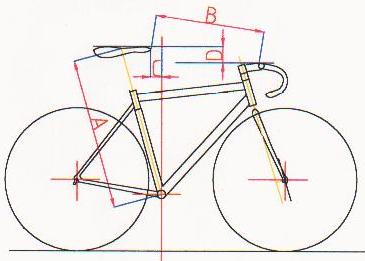
distance between handlebar and saddle measured from the front tip of the saddle to a tangent point in the back of the handlebar in the stem area;
Horizontal distance from the front tip of the saddle to the vertical line crossing the BB axle.
Vertical distance, from the top of the handlebar close to the stem to the upper side of the front tip of the saddle;
Bernard Hinault, suggests in his manual to use this formula to calculate dimension A:
A=0,885*H , with H as the crotch height.
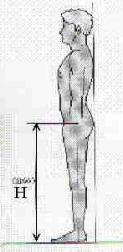
Dimension C, saddle Back-set, sets the pedaling style.
Dimension C varies from cyclist to cyclist, also depending on the bicycle use. Normally it is smaller for track or time trial bicycle (5~3; cm), but it tends to be bigger (6~8 cm) for endurance or tourism bicycles.
A common way to find the Saddle Back Set is to run a plumb line from the knee cap while holding the pedal crank horizontal (see figure below). The plumb line is supposed to cross the pedal axle.
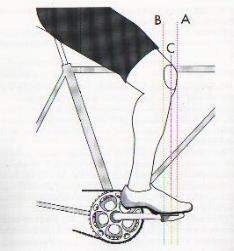
On the other hand a set up with the kneecap kept back is more adapted for enduro applications.
Basically it is up to the cyclist to choose this dimension according to personal preferences.
Most of the times, and for sure for track, time trial and Triathlon applications, advanced positions are clearly preferred.
Especially it is suggested that when the leg is at the Bottom Dead Center, to keep an angle of 150~155 degrees between the femur and the tibia.
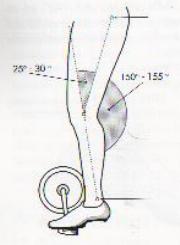
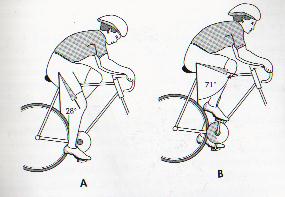
It is important not to forget that these are average values. In real life these dimensions are subjective to personal preferences and sizes such as the shoe length, the set up of the pedal cleats and the pedal crank length.
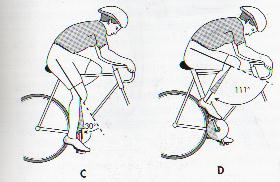
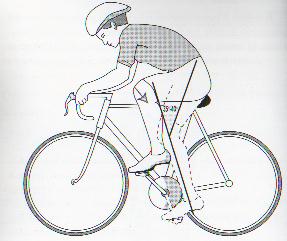
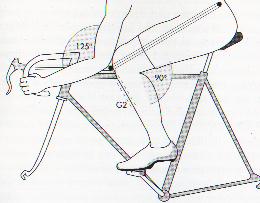
you want to sit on the saddle and while holding the handlebar and setting yourself as you would be going at max speed, you want to have an angle at your elbow of 145 deg. Your leg need to have an angle of 90 deg and the kneecap area should be pretty close to your elbow. This technique is a little bit radical, to smooth out this position according to personal preferences it is not a bad idea.
Cyclist Height ('.") 5'.2"-5'.4" 5'.4"-5'.7" 5'.7"-5'.9" 5'.9"-5'.11" 5'.11"-6'2" 6".2"-6'.5"
Dimension A(cm) 62-66 66-69 70-72,5 73,5-76 77-79,5 79,5-84,5
Dimension B(cm) 42-45 46-50 50-52 52-56 56-58 58-61
On this bicycle it is possible to change the seat tube position, allowing testing ride several dimension combinations. After some trial and error it is possible to choose the dimensions A-B-C-D according to the position that best fit personal preferences and applications.